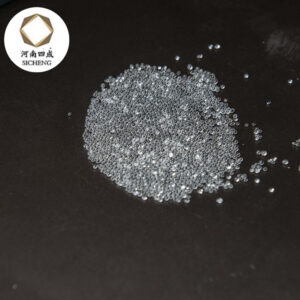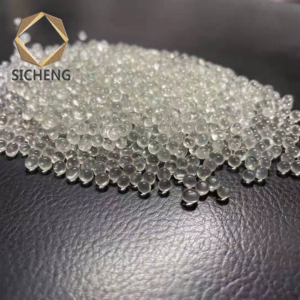The Advantage of Sandblasting Glass Beads
Glass beads are best suited for finishing metals. They can also be used for frosting and etching glass.
Glass Beads Applications
Cleaning (perfect for surface preparation without changing tolerances, or imparting ferrous contaminants)
Finishing (varying sizes create a wide range of unique surface finishes and blending of machining marks)
Peening (reduces the tensile stress in metal components, increasing fatigue limits)
Deburring (successful removal of burrs without any part damage resulting in a smooth peened surface)
A benefit to using glass beads is that they are environmentally friendly and contain no free silica, a common concern in metal finishing operations.
The size of the bead, your specific work piece shape, distance of the blast nozzle, air pressure and the type of blasting system all play an important role in the final finish and your abrasive consumption.
They are the ideal abrasive This helps you save both time and money. When you can spend less time on one cycle, you can get through more cycles faster if you have a large number of items that need blasting.
Glass beads come in a range of sizes, each producing the finish on your parts that you desire.
You can choose between glass beads that are coarser and ones that are finer. Whichever type of glass beads you choose, this type gives a bright, smooth and more satin-like finish.
| Designation | US Sieve | Nominal Diameter | Lowest roundness% | |
| Max(um) | Min(um) | |||
| 3 | 20-30 | 850 | 600 | 65 |
| 4 | 30-40 | 600 | 425 | 70 |
| 5 | 40-50 | 425 | 300 | 70 |
| 6 | 50-70 | 300 | 212 | 80 |
| 7 | 60-80 | 250 | 180 | 80 |
| 8 | 70-100 | 212 | 150 | 80 |
| 9 | 80-120 | 180 | 125 | 80 |
| 10 | 100-170 | 150 | 90 | 90 |
| 11 | 120-200 | 125 | 75 | 90 |
| 12 | 140-230 | 106 | 62 | 90 |
| 13 | 170-325 | 90 | 45 | 95 |



